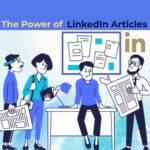LinkedIn is the most popular social media network for professionals. It is the place where some of the world’s most successful entrepreneurs, recruitment managers, and startup founders like to scour for talent. Naturally, it’s also the best platform for networking.
A soft skill like networking is sought after by professionals in almost all industries, and it could help you get the jump in the career you have been looking for.
LinkedIn also prioritizes networking by establishing degrees of connection. For sales prospecting, there’s hardly a better choice than LinkedIn. You can quickly pinpoint potential leads with relative ease on the platform. However, LinkedIn has a set of guidelines that all users must follow.
Each member of your network is known as a connection on LinkedIn. If you look carefully, you might notice 1st, 2nd, or 3rd written beside a connection name. But what does 1st, 2nd, 3rd mean on LinkedIn? It’s essential to understand what these numbers denote as you go about looking for sales prospects.

As Head of Customer Success, Lusine specializes in helping businesses achieve measurable growth by transforming underperforming campaigns into success stories. Lusine writes impactful articles that reflect her deep expertise in social media strategy and digital marketing, offering insights that drive engagement and deliver results. Combining data-driven analysis with a focus on client success, she makes sure every strategy aligns with business goals and exceeds expectations


The digital-first professional landscape requires a strong online presence, and it is crucial for career growth. LinkedIn stands out as the premier platform for building your professional brand.…

Nowadays, digital marketing and personal branding on social media platforms have become a vital tool for professionals and businesses. Among these, LinkedIn stands out as the preeminent platform…

When people think of LinkedIn, they often picture a place for job updates and networking. But today, LinkedIn has become much more than that. It’s now one of…